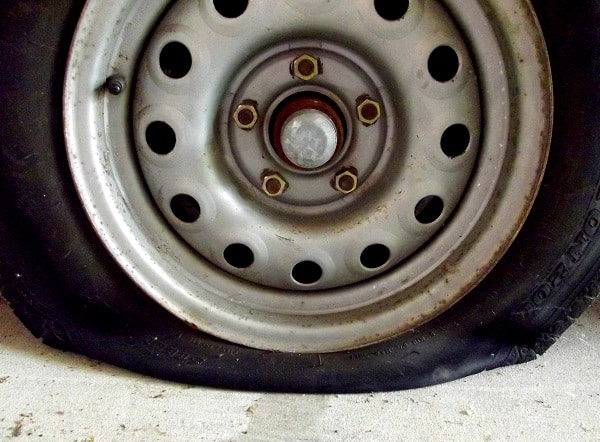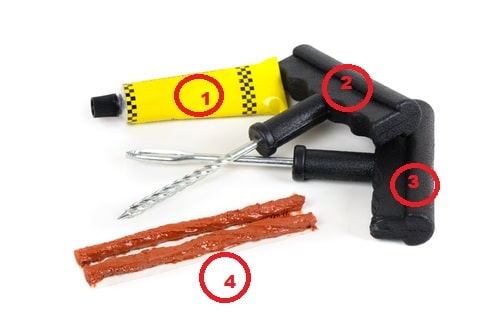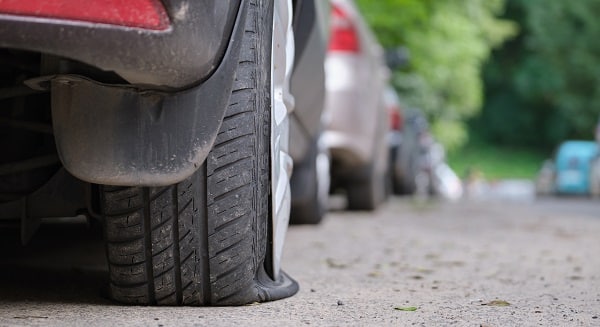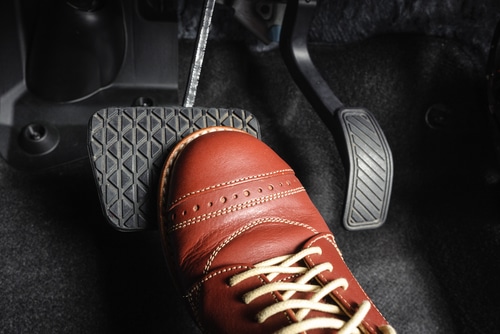Home » Blog » Car » Car Health & Safety » How to Fix a Punctured Tyre with Sealant or a Repair Kit
Categories
Tags
animal welfare
breed profile
buying a car
buying a pet
Car
car accessories
car care
car features
car insurance
Car safety
car sales
car service
cat
cat behaviour
cat body language
Cat Breeds
cat food
cat insurance
comprehensive car insurance
Dog
Dog Behaviour
dog body language
Dog Breeds
dog food
Dog Insurance
dog training
eco friendly cars
Kitten
New Car
pet accessories
pet activities
Pet Adoption
pet breeders
pet days of the year
pet fun stuff
Pet Health
pet insurance
pet parenting
Pet Safety
pet services
Puppy
rescue pets
road safety
road trip
safe driving
Recent Blog:
Facebook Posts
1 day ago
Growing old sometimes means we can’t take care of pets anymore. Find out some advice on what to do when this happens:![]()
![]() Senior Pet Parents – Contingency Plans for Your Pet – bit.ly/44bzwkS
... See MoreSee Less
Senior Pet Parents – Contingency Plans for Your Pet – bit.ly/44bzwkS
... See MoreSee Less
Senior Pet Parents' Contingency Plans for Pets
www.pd.com.au
Sometimes senior pet parents need more downtime. For older pet owners, this can be tricky to navigate if their dog or cat is full of beans and wants to3 days ago
Before you rev up the engine, let’s run through a checklist of things to do before starting your car. Not only do these steps ensure your safety (and that of others around you), but they also help in maintaining your vehicle's longevity.![]()
![]() Driving Tips: Your Checklist Before Starting Your Car -
... See MoreSee Less
Driving Tips: Your Checklist Before Starting Your Car -
... See MoreSee Less
Driving Tips: Your Checklist Before Starting Your Car
www.pd.com.au
Heading out for a drive? Hold up a second! Whether you're dashing off to work, running errands, or embarking on a road trip adventure, there are a few1 week ago
Are intestinal worms setting up camp in your dog’s gut without paying rent? Here’s how to spot the main culprits and get rid of them too:![]()
![]() Preventing, Identifying and Treating Intestinal Worms in Dogs - bit.ly/43YjCKu
... See MoreSee Less
Preventing, Identifying and Treating Intestinal Worms in Dogs - bit.ly/43YjCKu
... See MoreSee Less
Preventing, Identifying and Treating Intestinal Worms in Dogs
www.pd.com.au
Intestinal worms, such as roundworms in dogs are one of the least glamorous topics on the planet. These intestinal parasites that basically use our dogsGetting a flat tyre is something that happens to everyone at some point. In the case of a puncture, you’ll need to put on a spare wheel (learn how to change a tyre here) and take your car to a specialist for a tyre puncture repair or replacement.
If, however, you’re stranded with a flat tyre and no spare wheel, you may have to temporarily fix the puncture yourself till you get to a tyre specialist. For that, you’ll need tyre sealant or a tyre puncture repair kit and some DIY know-how.
Here’s our tyre puncture repair guide to make sure you’re prepared.

Types of punctures
First off, you’ll only be able to do your own tyre puncture repair if the hole or tear is 4mm or less. For bigger holes or tears, your repair kit won’t suffice and you’ll have to call your roadside assistance to help you.
Punctures can be caused by a variety of objects, including nails, screws, glass or metal scraps on the road. Here are the two types:
Slow puncture
This is when a small, sharp object has pierced through the tyre tread and is causing air to escape slowly from your wheel. You may notice one wheel looking deflated compared to the other wheels or that your car is more difficult to steer than usual.
Rapid puncture
This is when a sharp object has pierced or even torn the tyre tread and air is escaping rapidly from your wheel. You’ll immediately notice your wheels wobbling or shuddering, difficulty steering your car, or the car pulling to the left or right.
What to do if you notice a puncture
Whether it’s a slow or rapid puncture, you should find a safe place, far away from traffic, to pull over on the side of the road as soon as possible. Not only can driving with a flat tyre disintegrate the tyre components and cause damage to the rims, but you may be putting yourself and your passengers at risk by driving with a flat wheel.
Once you’ve safely brought your car to a halt, put your hand brake on and your hazard lights. If you have one, locate your emergency triangle from your boot and put it at least 45m behind your vehicle where other cars can see it.

Tyre puncture repair with sealant
Tyre sealant is a useful quick fix that can often get your tyre ‘fixed enough’ to get to the nearest mechanic or specialist. It comes in an aerosol can with a small machine called a compressor (an inflator). There are different brands of sealant that have slightly different instructions, so always consult them before you start your repair.
In general, though, you would use sealant like this:
- Locate the puncture in your flat tyre. Now rotate the wheel so it’s sitting at the top. Ideally, you want your tyre valve to be as high as possible, too.
- Check your tyre’s pressure. You’ll find the recommended PSI in your car handbook or on a sticker found inside your petrol filler flap or in the inside of the driver’s door.
- Connect the air outlet house from the tyre inflator to the top of the sealant bottle.
- Now connect the sealant hose to the valve.
- Lock the sealant into place on top of the inflator.
- Plug the tyre inflator into your car’s 12v accessory socket.
- Ensure your car is in neutral, then switch on your ignition.
- Turn the tyre puncture repair compressor’s power on and monitor the pressure gauge.
- Once it’s reached the correct pressure, turn the inflator off.
- Leave that to cool for about 2 to 3 minutes, then detach the unit from the tyre and accessory socket.
- It’s recommended to drive a few kilometres to allow the sealant to spread around the tyre and properly coat the puncture.
- You’ll then need to stop and recheck the puncture, and top up the sealant if its required.
Once your tyre is sealed, be sure to keep your speed limit below 80kmp/h as you make your way to a tyre specialist.

Tyre puncture repair with a repair kit
Depending on the nature of your puncture, a tyre puncture repair kit can offer a permanent fix. However, seeing as this method doesn’t re-inflate your tyre as the sealant and compressor system does, you’ll only be able to drive on the wheel again if it’s only moderately deflated due to a slow puncture.
Or, if you know your correct PSI and have a pump or compressor in your car, you’ll be able to re-inflate the wheel yourself. Either way, you’ll still need to have your tyre inspected by a specialist as soon as possible.
To fix your tyre with a repair kit, you’ll need the following:
- Tyre lubricant
- A reamer tool
- An inserter tool
- Repair cords
- Tyre pump (or compressor – not pictured)
- Pliers (not pictured)

Steps
- To start your tyre puncture repair, locate the puncture. Check the flat tyre and look for any sharp or shiny objects lodged in the tread.
- Remove the object using pliers.
- Clear out the puncture hole by inserting your reamer tool into the hole. Adding some lubricant to your reamer will make this easier.
- Check the size of the puncture. As mentioned, you’ll only be able to repair the puncture yourself if it’s 4mm or less.
- If it’s repairable, take one of your repair cords and thread it through the prongs of your inserter tool. Make sure you also add lubricant to the inserter tool.
- Now push the insertion with the repair cord through the puncture hole until only a small bit of the repair cord remains protruding from the tyre.
- In one swift motion, pull out your insertion tool. You can clip off the protruding bits of repair cord if you’d like to.
- Now inflate your tyre again to the correct PSI.
This video will give you visual understanding of the process:
Unexpected punctures are unavoidable, but you never want to open yourself up to a flat tyre due to bad maintenance.
Avoid having to change a tyre in an emergency by taking good care of your wheels. Rotate them regularly so they wear evenly, learn why tyre pressure is so important and read tips from the experts on looking after your tyres properly.
Insurance that assists
So now you know how to do a tyre puncture repair. If you don’t have all the tools, however, you’ll need to call roadside assistance. If you’re a PD Insurance member, you can easily add roadside assistance to your insurance policy. Yet another reason why comprehensive car insurance with us a good idea!
PD offers affordable premiums, the ease of taking your policy out online, a range of optional extras and of course, incredible service. Why not take a few minutes to get a quote?
Share On:




